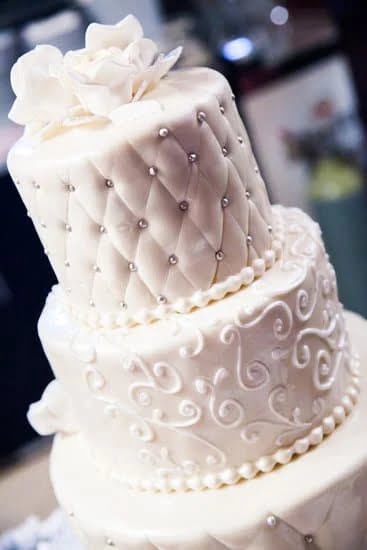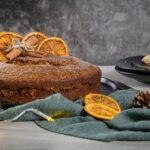Cake decorating is a true art form that allows individuals to transform a simple cake into a stunning masterpiece. While design and creativity play significant roles in achieving beautiful cakes, the choice of tips for cake decorating is equally important.
The right tip can make all the difference in creating intricate designs, realistic details, and professional-quality finishes. In this article, we will explore the different types of tips available for cake decorating, how they are used, and the various techniques that can be employed to achieve amazing results.
When it comes to cake decorating, selecting the appropriate tips is crucial because each type offers unique capabilities and effects. Whether you are a beginner or an experienced baker, understanding the different types of tips and their functionalities can greatly enhance your cake decorating skills. From outlining and writing on cakes to creating stunning swirls, stars, ruffles, flower petals, 3D floral arrangements, leaf details, and intricate designs – the possibilities are endless with the right tip.
By delving into this comprehensive guide on types of tips for cake decorating, you will gain invaluable knowledge on selecting the perfect tip for your desired design or effect. We will break down each type of tip individually – including round tips, star tips, petal tips, leaf tips, and specialty tips – providing insight into their unique uses and benefits.
Additionally, we will explore how to choose the right piping bag for each type of tip and offer expert advice on proper usage techniques.
With this article as your go-to resource for understanding different types of tips for cake decorating, you will be better equipped to create stunning and professional-looking cakes that are sure to impress. So let’s dive in and discover all there is to know about choosing the right tips for your creative baking endeavors.
Understanding the Different Types of Tips for Cake Decorating
Cake decorating is a true art form that requires precision, creativity, and the right tools. One of the most important tools in cake decorating is the piping tip. Piping tips come in a variety of shapes and sizes, each designed to create different effects on cakes and other desserts. Understanding the different types of tips for cake decorating is essential for any aspiring cake decorator.
- Round Tips: Round tips are the most basic type of tip and are commonly used for outlining, writing, and creating simple designs on cakes. These tips have a circular opening and come in various sizes, allowing decorators to create thin or thick lines depending on their needs. They are also great for filling in large areas with frosting or creating dots.
- Star Tips: If you want to create stunning swirls, stars, or ruffles on your cakes, star tips are the way to go. These tips have multiple small openings arranged in a star shape, which allows decorators to pipe out buttercream or royal icing with beautiful textured effects. Star tips come in different sizes, giving decorators options to achieve different levels of intricacy.
- Petal Tips: When it comes to designing gorgeous flower petals and 3D floral arrangements on cakes, petal tips are essential. These tips have a curved edge that tapers to a point, resembling the shape of flower petals. With petal tips, decorators can easily create lifelike flowers by piping rows of overlapping petals onto their cakes.
Once you understand the different types of tips available for cake decorating, it’s also important to choose the right piping bag for each type of tip. Piping bags can be made from various materials such as plastic or cloth, but they all serve the same purpose – holding your frosting or icing and helping you control its flow while you pipe.
When using round or star tips with small openings, it’s best to use disposable plastic piping bags as they provide better control over the flow of frosting. For larger tips like petal tips, which require more frosting to be piped at once, cloth piping bags are a great choice as they can hold more icing and are more durable.
Understanding the different types of tips for cake decorating and choosing the right piping bag for each tip will greatly enhance your cake decorating skills. Whether you are outlining, creating stunning swirls, designing flower petals, or adding delicate leaf details, having the right tip and piping bag combination can make all the difference in achieving beautiful and professional-looking results.
Round Tips
Round tips are an essential tool in every cake decorator’s arsenal. They are most commonly used for outlining and writing on cakes, allowing decorators to add personalized messages or intricate details to their designs. Round tips come in various sizes, ranging from small to large, each offering different possibilities for creating precise lines and fine details.
One of the main uses of round tips is for creating outlines on cakes. With a round tip, decorators can easily trace the edges of their cake layers or create shapes and patterns on the surface. The smaller sizes, such as #1 or #2, are perfect for creating delicate outlines or writing small letters, while larger sizes like #7 or #8 are more suitable for bolder designs.
In addition to outlines, round tips are also great for adding written messages on cakes. Whether it’s a simple “Happy Birthday” or a more elaborate script font, decorators can use round tips to pipe the words directly onto the cake’s surface. By using different pressure techniques with the piping bag, decorators can achieve varied thickness in their lettering, making it even more visually appealing.
To make the most out of round tips, it’s important to practice consistent pressure and control when using them. Unlike other tip shapes that may require specific techniques for achieving different designs, round tips are straightforward to use. Decorators simply need to hold the piping bag at a 90-degree angle and apply steady pressure while guiding the tip along the desired path.
Overall, round tips provide cake decorators with endless possibilities for outlining and writing on cakes. Their versatility makes them a staple tool in any decorator’s kit, enabling them to add those personal touches and intricate details that truly elevate a cake design.
Star Tips
Star tips are one of the most versatile and popular types of tips for cake decorating. They create beautiful designs such as swirls, stars, and ruffles that add texture and visual appeal to your cakes. With the right technique and a little practice, you can create stunning decorations that will impress your family and friends.
The most common sizes for star tips are #16, #18, and #21. The larger the number, the larger the opening of the tip and the bigger the design it will create. If you want finer details or smaller designs, you can use smaller star tips like #13 or #14.
To create a swirl design with a star tip, hold your piping bag at a 90-degree angle to the surface of the cake. Apply steady pressure as you rotate your wrist in a counterclockwise motion. Slowly move your hand towards the center of the cake while continuing to apply pressure. This will create a beautiful swirl pattern on your cake.
If you want to create ruffles with a star tip, start by holding your piping bag at a 45-degree angle to the cake with the pointed end of the star tip facing up. Apply gentle pressure as you move your hand back and forth in a zig-zag motion. This will give your cake an elegant ruffled look.
| Star Tip Size | Description |
|---|---|
| #16 | Creates medium-sized stars and swirls |
| #18 | Creates large stars and swirls |
| #21 | Creates extra-large stars and swirls |
Petal Tips
When it comes to cake decorating, creating exquisite floral designs is a skill that many bakers aspire to master. One of the key tools for achieving these beautiful flower petals and 3D floral arrangements is the petal tip. Petal tips are designed specifically for shaping delicate petals and leaves, allowing decorators to bring their cakes to life with stunning floral designs.
Petal tips come in a variety of sizes ranging from small to large, each producing different results. Smaller petal tips are ideal for creating intricate, detailed petals for smaller flowers like cherry blossoms or rosebuds. On the other hand, larger petal tips are perfect for making bold and voluminous petals for larger flowers such as peonies or sunflowers.
To achieve lifelike flower petals, it’s important to hold the piping bag at a 45-degree angle while applying consistent pressure. This will allow the buttercream or icing to flow smoothly through the petal tip, creating well-defined and realistic petals. Additionally, practicing different techniques such as ruffling, looping, or lining can help add depth and dimension to your floral designs.
| Petal Tip Size | Flower Type | Description |
|---|---|---|
| #101-#104 | Rosebud | Small size ideal for creating closed rosebuds with tightly packed petals. |
| #102-#106 | Rose | Medium-sized petal tips used to make open roses with more spaced-out petals. |
| #127-#129 | Peony | Larger petal tips that produce voluminous and full peony flowers with layered petals. |
| #150-#153 | Sunflower | Extra large petal tips for creating grand sunflowers with wide and bold petals. |
With the right petal tips and techniques, you can design a wide range of floral arrangements on your cakes. From elegant rose garlands to whimsical daisies, these beautiful creations will surely impress your guests and add a touch of artistry to any celebration. So why not explore the world of petal tips and let your creativity blossom?
Leaf Tips
When it comes to cake decorating, leaf tips are essential for adding realistic and delicate leaf details to your creations. These tips are specially designed to create intricate and lifelike foliage, making your cakes truly stand out. In this section, we will explore the different types of leaf tips available and how you can use them to enhance your cake designs.
One of the most common types of leaf tips is the #352 tip, also known as the curved or bent leaf tip. This tip features a curved shape that allows you to easily pipe leaves with a natural curve. It is perfect for creating small to medium-sized leaves, giving your cake a delicate and realistic look.
Another popular option is the #353 tip, which has a straighter shape compared to the #352 tip. This tip is ideal for piping larger leaves with straight edges, such as palm leaves or broadleaf plants.
To use a leaf tip effectively, hold the piping bag at a 45-degree angle and apply steady pressure while guiding the tip along in a gentle zigzag motion. This will help create the veins and texture of a real leaf. Remember to pipe from the base of the leaf towards its tip for a more natural appearance. You can also experiment with different colors of icing to add depth and dimension to your leaves.
Incorporating realistic leaf details into your cake designs can truly elevate them to another level. Whether you’re creating a nature-themed cake or simply want to add some botanical embellishments, leaf tips are an indispensable tool for achieving stunning results. With careful practice and attention to detail, you’ll be able to create lifelike leaves that bring your cakes to life.
| Type of Leaf Tip | Description |
|---|---|
| #352 Tip | Curved or bent shape for creating small to medium-sized leaves with a natural curve |
| #353 Tip | Straighter shape for piping larger leaves with straight edges |
Specialty Tips
Specialty tips are a category of cake decorating tips that offer unique shapes and designs to create intricate patterns and textures on cakes. These tips are perfect for those who want to add an extra level of detail and sophistication to their cake designs. Here are some popular specialty tips and what they can be used for:
- Basketweave Tip (Tip #48): This tip is perfect for creating a woven basket design on the sides of a cake. With its unique shape, it allows you to pipe in a back-and-forth motion to create textured lines resembling a woven basket. This tip is often used to decorate cakes for special occasions such as Easter or rustic-themed events.
- Grass Tip (Tip #233): If you want to create realistic grass or hair textures on your cake, the grass tip is your go-to tool. This tip has multiple small holes that allow you to pipe out thin strands resembling grass or hair. It is commonly used when decorating cupcakes with garden or animal themes.
- Ribbon Tip (Tip #44): The ribbon tip is perfect for creating delicate ribbons or bows on cakes. Its long, narrow shape allows you to pipe out thin lines of frosting in graceful curves, mimicking the look of ribbons. This tip is often used when decorating wedding cakes or elegant birthday cakes.
- Specialty Writing Tips: There are also specialty tips specifically designed for writing on cakes with beautiful calligraphy-like letters, cursive fonts, or personalized messages. These tips come in various sizes and styles, allowing you to add personalized messages or intricate designs in frosting on your cakes.
In order to use these specialty tips effectively, it’s important to have good control over your piping bag and practice before attempting complex designs. Additionally, make sure the consistency of your frosting is appropriate because some intricate designs may require firmer icing while others work better with softer icing.
When using a specialty tip, it’s also important to consider the size and shape of the tip you’re using, as this will determine the final look of your design. Experiment with different techniques such as applying slight pressure or dragging the tip across the surface to achieve different effects.
With practice and creativity, specialty tips can elevate your cake decorating skills to a whole new level. These unique tips allow you to create stunning and intricate designs that will impress anyone who sees your cakes. So if you’re ready to take your cake decorating game up a notch, don’t hesitate to explore the world of specialty tips and let your imagination run wild.
Piping Bags
Piping bags are an essential tool for cake decorating, and choosing the right piping bag for each type of tip is crucial to achieving the desired results. There are different types of piping bags available, and selecting the appropriate one can make a significant difference in the overall outcome of your cake design.
Disposable Piping Bags
Disposable piping bags are a popular choice among many bakers and decorators. Convenience is one of their main advantages since they eliminate the need for cleanup. They are made from sturdy yet flexible plastic that is food-safe and designed to withstand the pressure from squeezing out icing or frosting. Disposable piping bags are also cost-effective, as they come in packs and can be easily discarded after use.
Cloth Piping Bags
Cloth piping bags offer a more sustainable option compared to disposable ones. Made from durable cotton or polyester fabric, these reusable bags can last a long time with proper care. They are especially favored by professional decorators who value their versatility and durability. Cloth bags can be easily washed, making them an eco-friendly choice for those concerned about reducing waste.
Silicone Piping Bags
Silicone piping bags provide a unique alternative to traditional options. These bags are made from high-quality silicone that offers excellent grip and control over the icing flow. They are often seamless, which allows for easy cleanup as there are no creases or seams where icing can get caught. Silicone piping bags also have the advantage of being heat-resistant, making them suitable for working with hot ingredients such as melted chocolate or caramel.
When choosing a piping bag, it’s essential to consider factors like comfort, control, and ease of use. Some decorators may prefer the feel and control provided by certain materials over others. Experimenting with different types of piping bags can help you find what works best for you and your specific cake decorating needs.
Tips and Techniques for Properly Using Different Types of Tips
Properly using different types of tips for cake decorating requires some knowledge and techniques. Here are some tips and techniques to help you achieve the best results with each type of tip:
Practice Proper Hand Positioning
When using cake decorating tips, it is important to hold the piping bag correctly. Hold the bag with your dominant hand and use your other hand to guide and stabilize the bag. Place your dominant hand above the point where icing comes out of the tip and apply gentle pressure to control the flow of icing.
Maintain a Consistent Pressure
Consistency in pressure is key when it comes to using different tips. Too much pressure can result in uneven or messy piping, while too little pressure may create weak or inconsistent lines. Practice applying consistent pressure while controlling the flow of icing for smooth and controlled piping.
Control the Speed of Piping
The speed at which you pipe can greatly affect the outcome of your design. Faster piping may result in less control over lines and shapes, while slower piping allows for more precision and definition. Experiment with different speeds to find what works best for each specific design.
Use a Sturdy Surface
To achieve clean and precise designs, make sure your cake is on a sturdy surface before piping. Unstable surfaces can cause shaky hands, leading to less precise decoration. Use a cake turntable or place a non-slip mat under your cake for better stability.
Practice Different Techniques
Get familiar with various techniques such as outlining, filling in, rosettes, shells, dots, and ruffles, among others. Each tip has its own unique purpose and technique that can be achieved through practice and experimentation.
Remember that practice makes perfect when it comes to using different types of tips for cake decorating. Don’t be discouraged if your first attempts don’t turn out exactly as you hoped. With patience and practice, you’ll become more comfortable and skilled in creating stunning designs with each type of tip.
Troubleshooting and Common Mistakes to Avoid when Using Different Types of Tips
Using different types of tips for cake decorating can be a fun and creative way to take your cakes to the next level. However, it is important to be aware of some common mistakes that can occur when using these tips in order to achieve the best results. By understanding these potential issues, you can troubleshoot any problems that arise and ensure a successful cake decorating experience.
Proper Consistency of Icing
One common mistake when using different types of tips is not having the proper consistency of icing. If your icing is too thin or runny, it will not hold its shape when piped through the tip, resulting in messy and undefined designs. On the other hand, if your icing is too thick, it will be difficult to pipe smoothly and could clog the tip.
To achieve the right consistency, follow the recipe instructions carefully and adjust as needed. Add more liquid if your icing is too thick or more powdered sugar if it is too thin. It’s also helpful to test your icing on a surface before piping onto the cake to ensure it holds its shape.
Slow and Steady Pressure
Another mistake that can occur when using different types of tips is applying too much pressure when piping. This can result in uneven lines, bursts of icing, or even breaking the tip itself. It’s important to apply consistent and steady pressure while piping, allowing the icing to flow out smoothly.
Practice controlling your hand movements and maintaining a steady flow of pressure. Start by applying gentle pressure until you get comfortable with how much force is needed. Remember that practice makes perfect, so don’t get discouraged if your first attempts aren’t flawless.
Cleanliness and Care
Maintaining cleanliness and proper care for your piping tips is essential for achieving optimal results. One mistake many people make is not properly cleaning their tips between uses or storing them incorrectly. This can result in clogged or misshapen tips, which will affect the outcome of your designs.
After each use, thoroughly clean your tips with warm soapy water or place them in the dishwasher if they are dishwasher-safe. Make sure to dry them completely before storing them in a clean and dry place. Additionally, be cautious when handling the tips to avoid bending or damaging them, as this can also impact their performance.
By understanding and avoiding these common mistakes, you can make the most out of using different types of tips for cake decorating. Experiment with various designs and techniques while ensuring that you are taking proper care of your tools. With practice and attention to detail, you’ll be able to create stunning cakes that will impress anyone who sees them.
Conclusion
In conclusion, the art of cake decorating is truly enhanced by choosing the right tips. With the wide variety of tips available, understanding their different types and purposes is essential for achieving stunning results. Whether you are outlining and writing on cakes with round tips, creating swirls and stars with star tips, designing flower petals and 3D floral arrangements with petal tips, or adding delicate leaf details with leaf tips, each type of tip offers its own unique possibilities.
By harnessing the power of these different types of tips, you can take your cake decorating skills to new heights. The intricate designs and textures that can be achieved with specialty tips provide endless creative opportunities. It is important to consider not only the type of tip but also the piping bag that you pair it with. Choosing the right piping bag for each type of tip ensures that you have optimal control over your icing flow and precision.
Furthermore, proper technique plays a crucial role in utilizing different types of tips effectively. Practice and experimentation are key to mastering cake decorating techniques and achieving consistently great results. However, it is also important to be aware of common mistakes that can occur when using different types of tips. By avoiding these pitfalls and troubleshooting any problems that may arise, you can ensure that your cakes turn out beautifully every time.
Overall, understanding and utilizing the various types of cake decorating tips allows you to unleash your creativity and imagination onto edible canvases. With these tools at your disposal, there are no limits to what you can create – from intricate designs to breathtaking floral arrangements. So go ahead, experiment with different types of tips, practice your technique, and watch as your cake decorating skills transform into works of art.
Frequently Asked Questions
Which cake decorating tips to use?
When it comes to cake decorating, the choice of which tips to use largely depends on the specific design you want to achieve. Some commonly used cake decorating tips include round tips, star tips, leaf tips, and petal tips. Round tips are great for creating outlines, writing letters or numbers on the cake, or filling in small areas with icing.
Star tips produce a lovely swirl effect and can be used for creating borders or covering larger areas with a textured design. Leaf tips are perfect for making realistic leaves or creating ruffled edges on flowers. Petal tips come in various shapes and sizes and are ideal for crafting beautiful flower petals or adding intricate details to your cakes.
What are the best cake piping tips?
Determining the best cake piping tips is subjective as it depends on personal preference and the desired outcome you aim to achieve. However, some piping tips are highly recommended by experienced bakers and decorators. Large open star (1M) tip is widely favored for creating gorgeous rosettes, while closed star (2D) tip produces stunning swirl designs that resemble shells or ruffles.
For more delicate details, like intricate lace-like designs or latticework patterns, a fine round tip is often the go-to choice. If you’re looking to pipe grass or fur textures onto your creations, a multi-opening (233) tip works wonders.
Which piping tips do what?
Various types of piping tips serve different purposes in cake decorating. Round tip (also called plain tip) is versatile and can be used for outlining and writing messages with precision as well as filling large areas smoothly if used at an angle. Star tip (also known as open star tip) creates lovely textured swirls when held straight up but can create sharp edges when tilted at an angle against the cake surface.
Leaf tip has a triangular shape that helps replicate natural-looking leaves by applying pressure while moving slightly side-to-side. Petal tip typically has a curved shape resembling flower petals and allows you to create beautiful blooms by applying a gentle back-and-forth motion to build up layers. By understanding what each piping tip does, you can experiment and combine them to achieve the desired results in your cake decorating endeavors.

Welcome to our cake decorating blog! My name is Destiny Flores, and I am the proud owner of a cake decorating business named Cake Karma. Our mission is to provide delicious, beautiful cakes for all occasions. We specialize in creating custom cakes that are tailored specifically to each customer’s individual needs and tastes.





